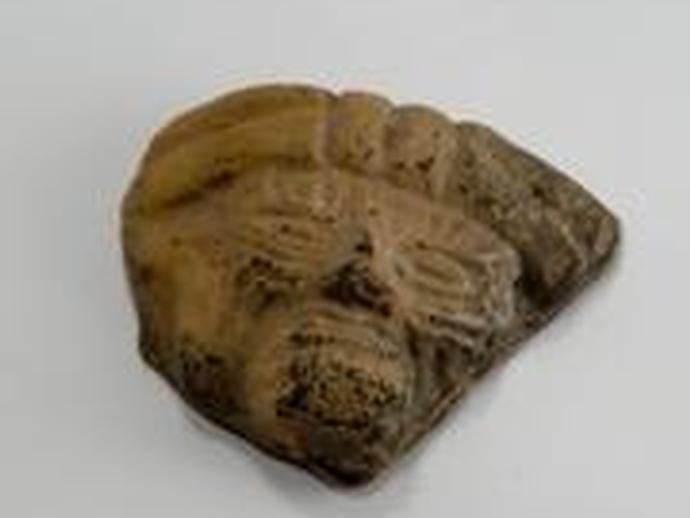March 27, 2009
Most cultures throughout time, including our own, have had effigies—figural representations of gods, rulers, important mythical figures, animals, or just individuals. Many effigies were made for religious or spiritual reasons. Some were made to be sacrificed in religious rituals; others were made to provide protection from malevolent gods or spirits. Some may have had no religious purpose but were made for aesthetic reasons, as art pieces to provide pleasure to the artist who made them and the owner who kept them.
Many of the effigies on display date from circa A.D. 600. Some of the finer pieces are probably later as they are stylistically similar to pieces found from the time of Cortes' defeat of Montezuma II in 1521. Several of these pieces were broken off of pottery vessels; others may be from stand-alone figurines.
Research conducted by Susan Degnan, a VMNH volunteer from Mechanicsville, Virginia.
Tlaloc
Tlaloc was the Aztec god of rain and fertility. Often seen wearing a net of clouds, he was thought to bring harm and destruction through storms and lightening. He is marked by his ringed eyes and clouded headdress.
Xiuhtecuhtli
The alter-ego of Huehueteotl, Xiuhtecuhtli is the main Aztec god of fire and is the younger appearing manifestation of the god Huehueteotl. He represents light in the darkness, warmth in coldness, food during famine, and life during death. Because of his youth and vigor (in contrast to his appearance as Huehueteotl), he is associated with youthful warriors. The many wrinkles and sour expression on his face possibly signifies that the figure was made at the end of an Aztec century (probably around A.D 600) as an offering so that he would not end his support of humanity.
Ear-spooled Figures
Large earrings and ear spools on these figures suggest that they were part of a religious ritual ceremony. Smaller jewelry tended to be for personal adornment and larger jewelry was used for religious ceremonies.
Unidentified Figurines
We have not yet been able to identify the figurines in this set. They are from a variety of stages of cultural development, possibly at Teotihuacán. Some of the pieces retain red and black pigment from their original paint treatment.
Teotihuacán Figurines
First Stage
First stage Teotihuacán figurines are marked by faces that are clear but without elaborate detail. Headgear is often shown and is relatively simple.
2nd Stage
The second stage of stylistic development is marked by more delicate modeling, especially of the faces. It was the first time noses were pulled to a point. The eyes and mouth were formed by cuts. Headdresses were sometimes more elaborate.
3rd Stage
Third stage figurines are marked by more accomplished modeling and a loss of the headdress. The faces tend to resemble stone masks of the period. Several of the figurines on display retain some of the pigment used to color them.
4th Stage
This style of figurine was made around A.D. 600, after the fall of Teotihuacán. hey are marked by an outburst in decorative detail and variety and are often found with representations of gods.
The Cactus Hill Site
Cactus Hill is located on the Nottoway River, about 45 miles south of Richmond. One of the earliest Native American sites in North America, it dates to 15,000—17,000 years ago. These specimens are replicas of some of the scientifically important artifacts from this site. The original artifacts are kept in a secure repository and only a few replica sets were made for research or exhibit purposes. VMNH was able to acquire this set of artifacts with generous donations from the Archaeological Society of Virginia (ASV) and ASV local chapters. A copy of the report for this site can be found in the VMNH Research Library.

 Hours & Admissions
Hours & Admissions Directions
Directions

